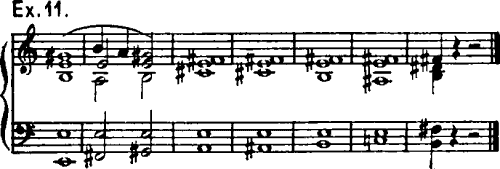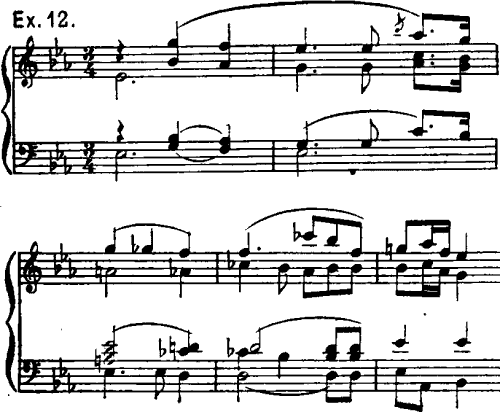Ludwig Van Beethoven's Sonatas for Piano and Violin - Analytically described by Ernst Stier
Op. 47
This Sonata appears like that of Op. 12 with an Italian title, and was originally intended to be dedicated to the mulatto Bridgetower, who was to play it first at a concert in 1803. Beethoven, however, did not hurry with his composition, but on the day of the performance he summoned Ries as early as 4.30 o'clock in the morning to copy the violin score. As he could not compose a Finale for want of time, he took the one of Op. 30, and at a later period wrote the variations for this Sonata. In consequence of a quarrel "on account of a girl," Beethoven revoked this dedication and presented the work to the French violinist, R. Kreutzer, with whom he became acquainted in 1798.
This Sonata is the pronounced favorite of all artists, just as Op. 24 is that of the amateurs. The players at once enter into an open, honest contest provoked by the solo of the violin. From the little figure of the introductory Adagio:

the principal motive of the Presto is developed, whose tone-waves continually ascend and descend, to be only interrupted for a moment by a pious prayer:

a similar strain being contained in the great Leonore Overtures, particularly in the first one:

The theme of the Andante, designed rather for the violin than for the piano, is inalienably impregnated into the minds of the audience after a good
Op. 96
This last Sonata appeared in 1817, but according to K. Holz, was composed as early as 1812 and dedicated to the Archduke Rudolph. This work shows still greater progress and virtually crowns the entire series. In it the master reveals himself more and more, and his grandeur is vested in it. As the Sonata in C Minor resembles the Third or Fifth Symphony, so this one resembles the Pastoral. Owing to its cheerful, fragrant loveliness, it is often called, and with greater reason than Op. 24, the "Spring Sonata." It is constructed on a bird-like trill:

and describes the joys of rural life in the most varied ways: contemplative musing in the Allegro, pious in the Adagio, humorous in the Scherzo, and enthusiastic in the Finale. The first movement confirms Schiller's words:
"Lightly the thoughts live together
Though things clash forcibly in space."
Its various component parts stand distinctly apart, without any connection whatever. The style of the melody and a certain playful cheerfulness give an individual stamp to the Allegro. The Adagio indicates Beethoven's fanciful view of the world, for the most devout Christian cannot pray to God more fervently. The song-form, one of the most important of the master, must be sung by both instruments. The unrestrained, gay Scherzo (G Minor) forms an excellent transition to the Finale with Hungarian rhythms and modulations. The variations show continued increase, some seem to point to dance and pantomime; with the scales in contrary motion at the end, both parties approach and recede from each other, and the effect of the Coda is surprising. The work throughout, particularly in the second movement, requires most delicate execution. Karl Holz relates that Beethoven played this Sonata with the celebrated virtuoso Rode in February, 1813, but soon discovered that His partner was not very musical. In the Adagio measures 34-36, he broke down, the composer smiled, and as he had a pause just then, he waved his hand and said: "Good-bye, Rode! Goodbye!" and--never played with him again!
About the Lesson
- Title: Ludwig Van Beethoven's Sonatas for Piano and Violin - Analytically described by Ernst Stier
- Author: Ernst Stier
- Source: an unknown edition of The Musical Observer - The cover is missing and no date is provided on the inside pages. Based on copyright dates on the music and other information, it appears to be from September 1910 or later.
- Download: PDF version of original article
